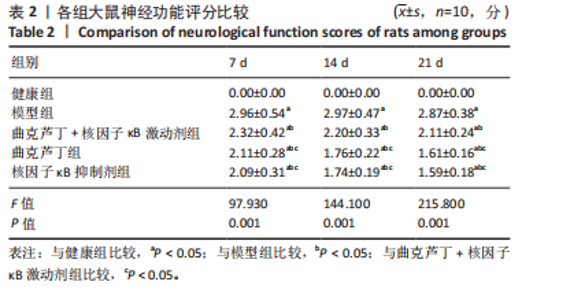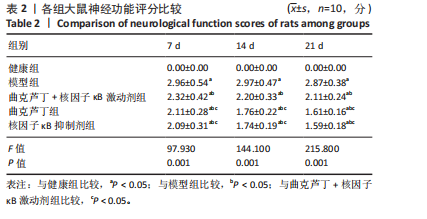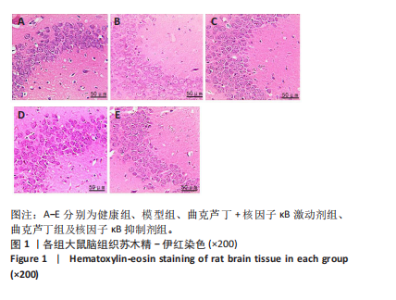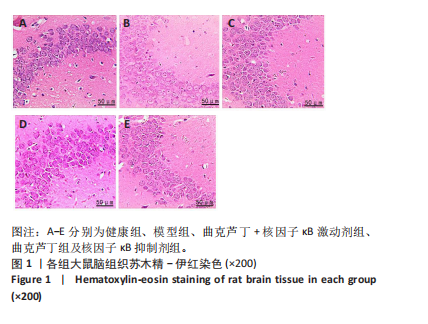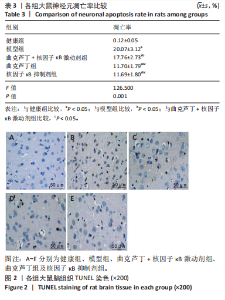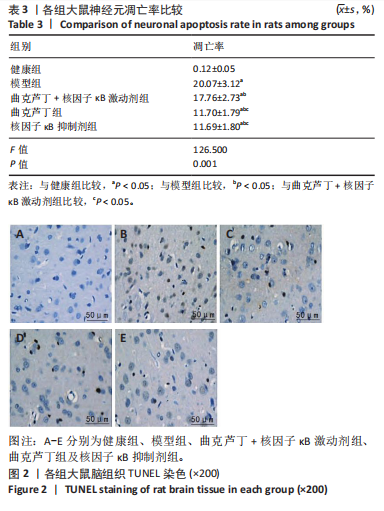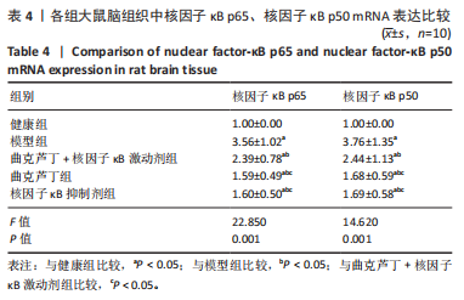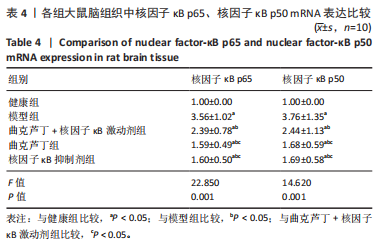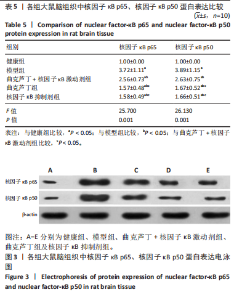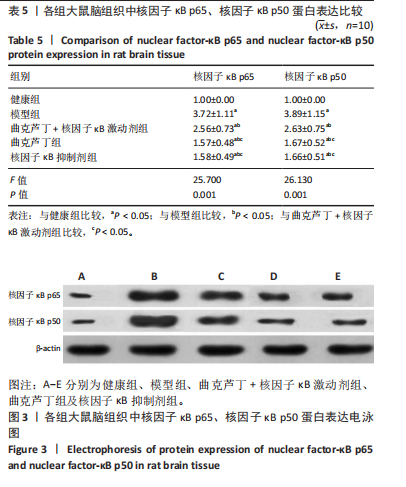[1] ZHENG T, MOU X, ZHANG J, et al. Clinical effect and changes of ET-1, FMD and NO levels in the treatment of acute cerebral infarction with acanthopanax injection. Am J Transl Res. 2021;13(4):3600-3608.
[2] ZHANG S, ZHAO LM, XUE BQ, et al. Acute recurrent cerebral infarction caused by moyamoya disease complicated with adenomyosis:A case report.World J Clin Cases. 2022;10(14):4617-4624.
[3] TANG X, TANG X, LU J, et al. Underlying Mechanism and Active Ingredients of Tianma Gouteng Acting on Cerebral Infarction as Determined via Network Pharmacology Analysis Combined With Experimental Validation.Front Pharmacol. 2021;16(12):760503.
[4] GAO LY. Butylphthalide inhibits nerve cell apoptosis in cerebral infarction rats via the JNK/p38 MAPK signaling pathway. Exp Ther Med. 2021;21(6):565.
[5] DUQUE-OSSA LC, GARCÍA-FERRERA B, REYES-RETANA JA, et al. Troponin I as a Biomarker for Early Detection of Acute Myocardial Infarction. Curr Probl Cardiol. 2023;48(5):101067.
[6] 毛雅君,冯亚莉,王梦娇,等.芦丁衍生物的研究进展[J].中国中药杂志,2021,46(18):4654-4665.
[7] 邱月,吴金伟.曲克芦丁的药理作用和常见临床应用概述[J].世界临床药物,2021,42(1):73-76.
[8] Huang S, Hong Z, Zhang L, et al. HMGA2 Promotes Brain Injury in Rats with Cerebral Infarction by Activating TLR4/NF-κB Signaling Pathway. Mediators Inflamm. 2022:2022:1376959.
[9] LI Z, XIN Z. Expression and significance of S-100β, CysC and NF-κB in patients with acute cerebral infarction. Exp Ther Med. 2021;21(2):149.
[10] 陈鹏,丁志杰.熊果酸对大鼠局灶性脑缺血再灌注损伤的保护作用[J].中国实验方剂学杂志,2015,21(12):129-133.
[11] 邹薇,徐红梅,王玉华.曲克芦丁对佐剂性关节炎大鼠血液流变性的影响[J].安徽中医学院学报,2008,27(6):42-44.
[12] 徐静华,王迎伟,徐娟,等.NF-κB抑制剂(PDTC)对大鼠抗胸腺细胞血清性肾炎系膜细胞凋亡、坏死及增生的影响[J].中国病理生理杂志,2005,1(7):1305-1310.
[13] YAMAGUCHI N, SAWANO T, FUKUMOTO K, et al. Voluntary running exercise after focal cerebral ischemia ameliorates dendritic spine loss and promotes functional recovery. Brain Res. 2021;1767(15):147542.
[14] ZHONG TT, WANG G, WANG XQ, et al. Serum calcium,albumin,globulin and matrix metalloproteinase-9 levels in acute cerebral infarction patients. World J Clin Cases. 2021;9(30):9070-9076.
[15] 万晓强,雷波,陈利,等.动脉溶栓联合介入治疗老年急性脑梗死患者的疗效及其对Vp、Vm、DVp、DVm、PI及CVR影响[J].转化医学杂志,2022,11(2):97-100.
[16] 韩丽英,路飞然,白英姿,等.曲克芦丁联合卵磷脂络合碘治疗中心性浆液性脉络膜视网膜病变的疗效观察[J].现代药物与临床, 2021,36(4):804-807.
[17] ZHANG Z, MA T, FU Z, et al. TBC1Domain Family Member 25 deficiency aggravates cerebral ischemia-reperfusion injury via TAK1-JNK/p38 pathway. J Neurochem. 2022;160(3):392-411.
[18] GENG H, ZHANG L, XIN C, et al. Xuesaitong oral preparation as adjuvant therapy for treating acute cerebral infarction: A systematic review and meta-analysis of randomized controlled trials. J Ethnopharmacol. 2022;285(1):114849.
[19] YANG J, YUAN L, WEN Y, et al. Protective Effects of Naringin in Cerebral Infarction and Its Molecular Mechanism. Med Sci Monit. 2020;4(26): e918772.
[20] ZHOU Z, WANG X, HU Q, et al. CircZfp609 contributes to cerebral infarction via sponging miR-145a-5p to regulate BACH1. Metab Brain Dis. 2023;38(6):1971-1981.
[21] 张良兵,操礼琼,余尧红,等.血栓通络汤联合曲克芦丁脑蛋白水解物对急性脑梗死炎性反应介质和神经功能的影响[J].中华中医药学刊,2020,38(7):204-207.
[22] Che F, Du H, Wei J, et al. MicroRNA-323 suppresses nerve cell toxicity in cerebral infarction via the transforming growth factor-beta1/SMAD3 signaling pathway. Int J Mol Med. 2019;43(2):993-1002.
[23] WANG Z, ZHAO H, TANG I, et al. CNS Organoid Surpasses Cell-Laden Microgel Assembly to Promote Spinal Cord Injury Repair. Research (Wash D C). 2022;3(1):9832128.
[24] DE ALMEIDA FM, MARQUES SA, DOS SANTOS ACR, et al. Molecular approaches for spinal cord injury treatment. Neural Regen Res. 2023; 18(1):23-30.
[25] DU Y, DUAN H, QIAO X, et al. Effect of biglycan on apoptosis of neurons in acute cerebral infarction in rats. FASEB J. 2020;34(1):1.
[26] 辛月,郭伟.基于Nrf2通路探讨曲克芦丁对急性脑梗死大鼠神经功能的保护作用[J].解放军医药杂志,2021,33(4):10-14.
[27] CHEN Z, CHEN X, FEI S, et al. Effect of butylphthalide on cerebral infarction rats and its mechanism based on AMPK/eNOS/NF-κB(p65) signal pathway. Latin Am J Pharm. 2020; 39(4):739-746.
[28] ZHANG J, JIANG H, WU F, et al.Neuroprotective Effects of Hesperetin in Regulating Microglia Polarization after Ischemic Stroke by Inhibiting TLR4/NF-κB Pathway. J Healthc Eng. 2021;17(1):9938874.
[29] 李中康,杨惠民,刘重琪,等.调脂通脉解毒方对脑梗死大鼠Toll样受体4、核因子κB p65影响的实验研究[J].现代中医临床,2021, 28(4):46-51.
[30] ZHU L, DING S, WU Z, et al. Ozone treatment alleviates brain injury in cerebral ischemic rats by inhibiting the NF-κB signaling pathway and autophagy. Cell Cycle. 2022;21(4):406-415.
[31] 王建方,贾天松.脑脉利颗粒联合曲克芦丁治疗急性脑梗死的临床研究[J].现代药物与临床,2022,37(4):755-759.
[32] LUO L, LIU M, FAN Y, et al. Intermittent theta-burst stimulation improves motor function by inhibiting neuronal pyroptosis and regulating microglial polarization via TLR4/NFkappaB/NLRP3 signaling pathway in cerebral ischemic mice. J Neuroinflammation. 2022;19(1):141.
[33] LI B, ZHANG B, LI Z, et al. Ginkgolide C attenuates cerebral ischemia/reperfusion-induced inflammatory impairments by suppressing CD40/NF-kappaB pathway. J Ethnopharmacol. 2023;312:116537.
[34] XU D, KONG T, SHAO Z, et al. Orexin-A alleviates astrocytic apoptosis and inflammation via inhibiting OX1R-mediated NF-kappaB and MAPK signaling pathways in cerebral ischemia/reperfusion injury. Biochim Biophys Acta Mol Basis Dis. 2021;1867(11):166230.
[35] LI R, JIA H, SI M, et al. Loureirin B protects against cerebral ischemia/reperfusion injury through modulating M1/M2 microglial polarization via STAT6 / NF-kappaB signaling pathway. Eur J Pharmacol. 2023;953: 175860. |
